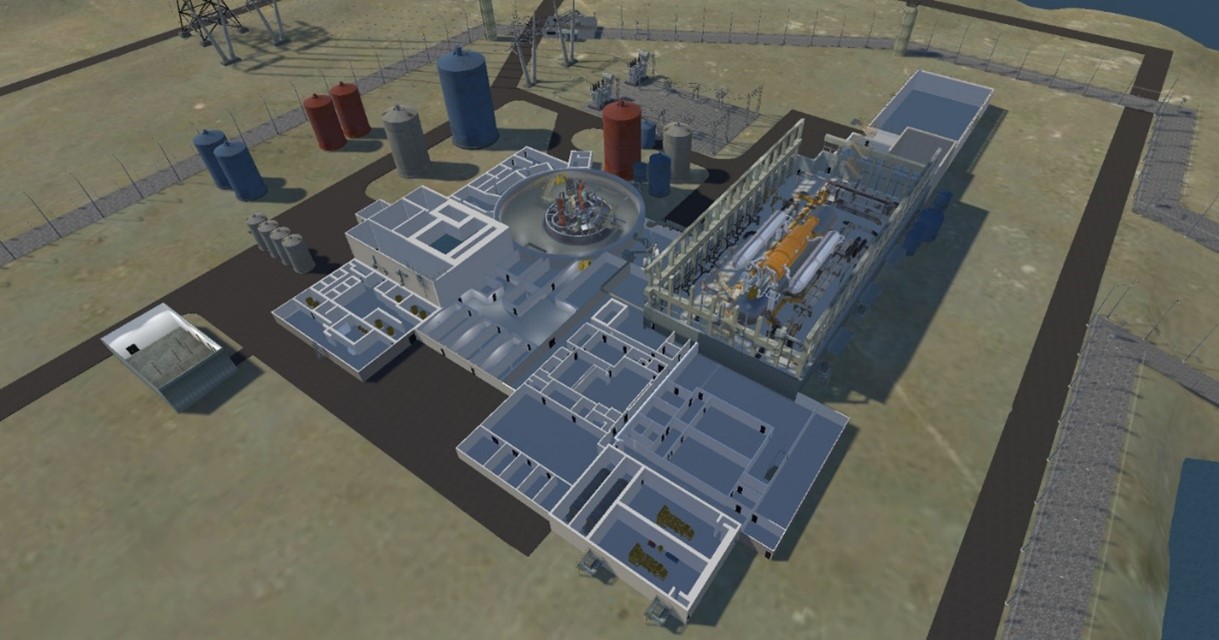PHYSICAL SECURITY
Background
Physical security of nuclear power plants is an important aspect of maintaining a safe, secure, and reliable nuclear energy fleet. Physical security programs at U.S. nuclear sites grew to meet changes in their design-basis threat (DBT) over time and after the events of September 11, 2001. The requirements for U.S. nuclear power plants to maintain a large onsite physical security force ranks high in comparison to other plant operational costs. As U.S nuclear power plants modernize their infrastructure and control systems, an opportunity exists to apply these advanced tools, methods, and automation and using advances in risk-informed methods. These include higher-fidelity models that reduce conservatisms in security models, leverage automation as a force multiplier, and use advances in risk-informed methods to optimize security postures.

The Department of Energy and its national laboratories have extensively studied physical-security technologies and methods that couple detect, delay, and response attributes to achieve required physical-security assurance. Additionally, they have extensive experience developing and using advanced computational tools that could provide benefits in developing a strong technical basis for physical security. The LWRS Program effort seeks to create tools, methods, and technologies that will:
Apply aspects of risk-informed techniques for physical-security decisions and activities to account for a dynamic adversary
Apply advanced modeling and simulation tools to better inform physical-security posture
Assess benefits from proposed enhancements, novel mitigation strategies, and potential changes to regulations
Enhance the technical basis necessary for operating utilities to reevaluate their physical security posture while meeting regulatory requirements.
Research and Development Purpose and Goals
The goal of the Physical Security Pathway is to develop and demonstrate an industry-wide strategy of sustaining a long-term, optimized, physical-security regime that reduces costs and regulatory burden. This research will leverage advances in technology such as advanced adversary-based risk-informed tools to reduce uncertainties in physical-security models used for planning and decision making. This research also aims to reduce conservatisms that effect current physical-security postures.
Advanced Technology
The objectives of this activity are to leverage results from other organizations (i.e., the Department of Defense, the Department of Homeland Security, and DOE's National Nuclear Security Administration) that will enable the LWR fleet to incorporate advanced weapon technologies used in other high-consequence security environments and lethal and non-lethal denial system technology into their physical security posture.
Risk-Informed Physical Security
The objective of this activity is to enable use of physical security-related risk-informed dynamic assessments. Physical security has demonstrated limited ability to use quantified risk assessments (and other risk-informed approaches) due to the dynamic nature of potential threats.
Advanced Security Sensors
Advanced sensor development has the potential to significantly improve industry response time to a design basis threat adversary early in the attack phase. Successful efforts in this area would increase the likelihood of defending against an attack and enhance the economics of doing so.
For more information contact the R&D Pathway Lead: